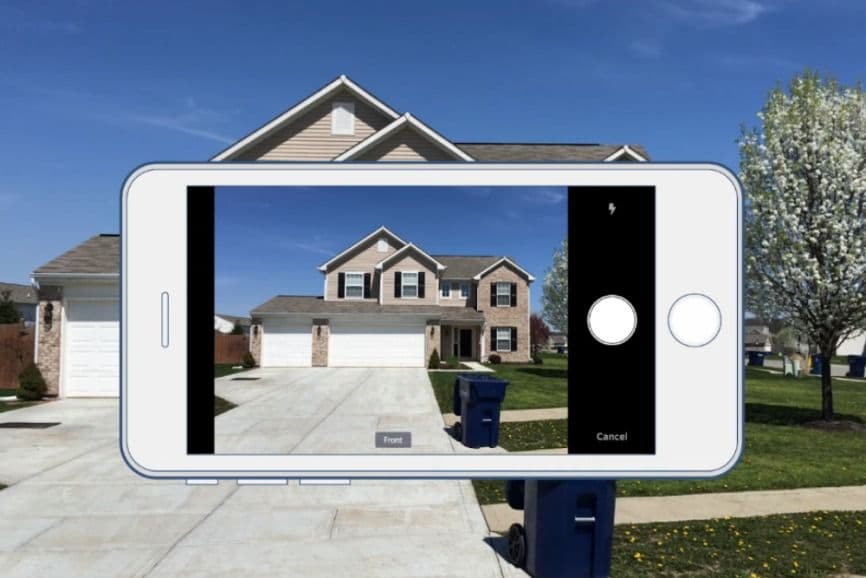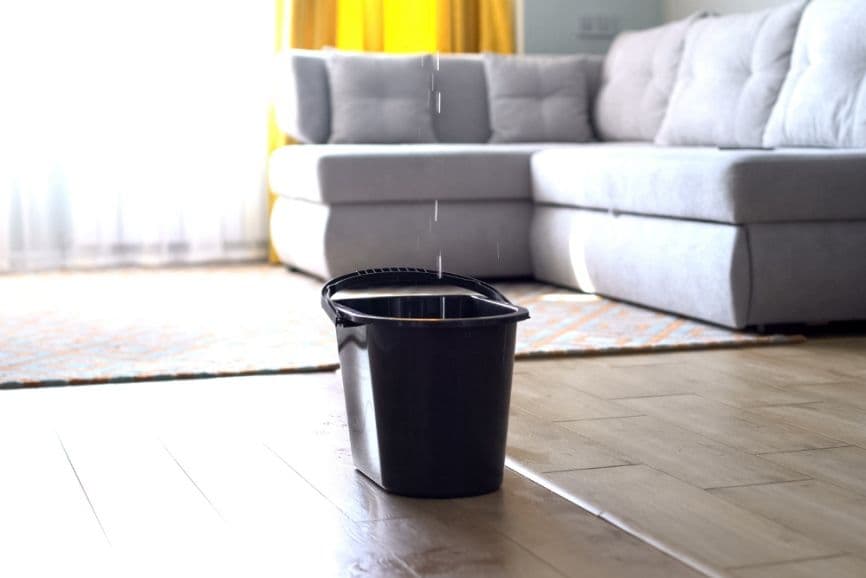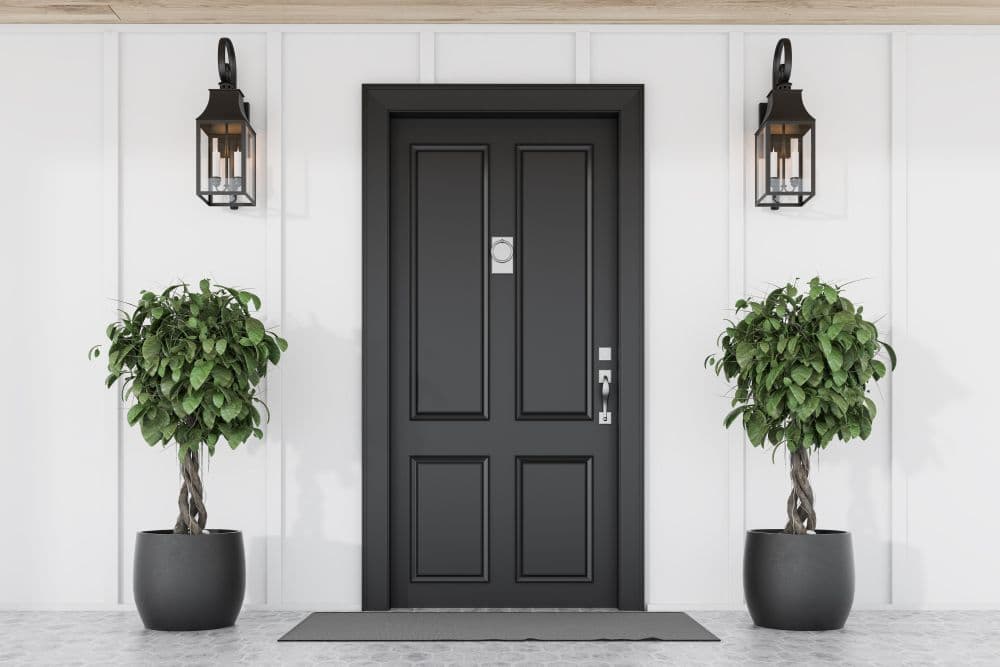Which Type of Replacement Window Is Best for Your Home?
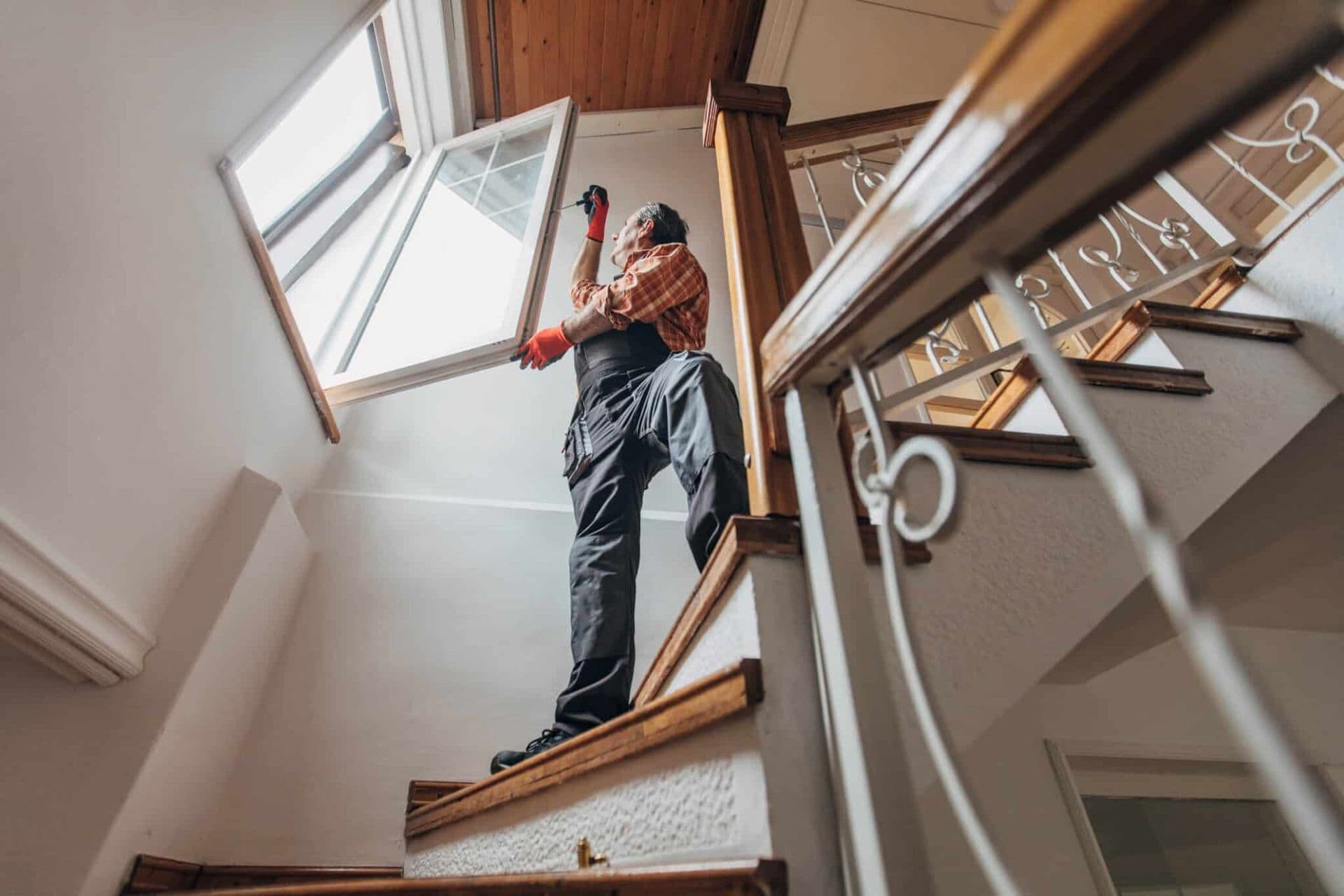
Updated September 2025
Replacing your windows is one of the smartest investments you can make in your home. But with so many styles and materials available, it’s easy to feel overwhelmed. Should you go with double-hung or casement? Vinyl or wood?
What makes a window “energy-efficient,” and how much should you really spend?
Many Mid-Atlantic homeowners come to HomeFix unsure where to start. This guide walks you through the most popular types of replacement windows, what materials work best in our region, and how to choose a long-lasting solution that saves energy and elevates your home’s appearance.
What are the Main Types of Replacement Windows?
The first decision you'll face when replacing your windows is choosing a window style. Different types of windows offer different functionalities—some are easier to clean, some provide more ventilation, and others are purely decorative.
Let’s explore the most common styles and how they function.
Double-Hung Windows
This timeless window style features two movable sashes that slide up and down. Double-hung windows are extremely popular for their easy maintenance, classic appearance, and versatility. They're also safer for homes with children because the top sash can remain open while the bottom stays closed.
Pros: Double-hung windows usually tilt out for easy cleaning and maintenance, which is why it’s a popular type of house window.
Cons: Since both sashes of a double-hung window open, there is an increased chance of air leaks.
Best for: Bedrooms, living rooms, and second-story installations.
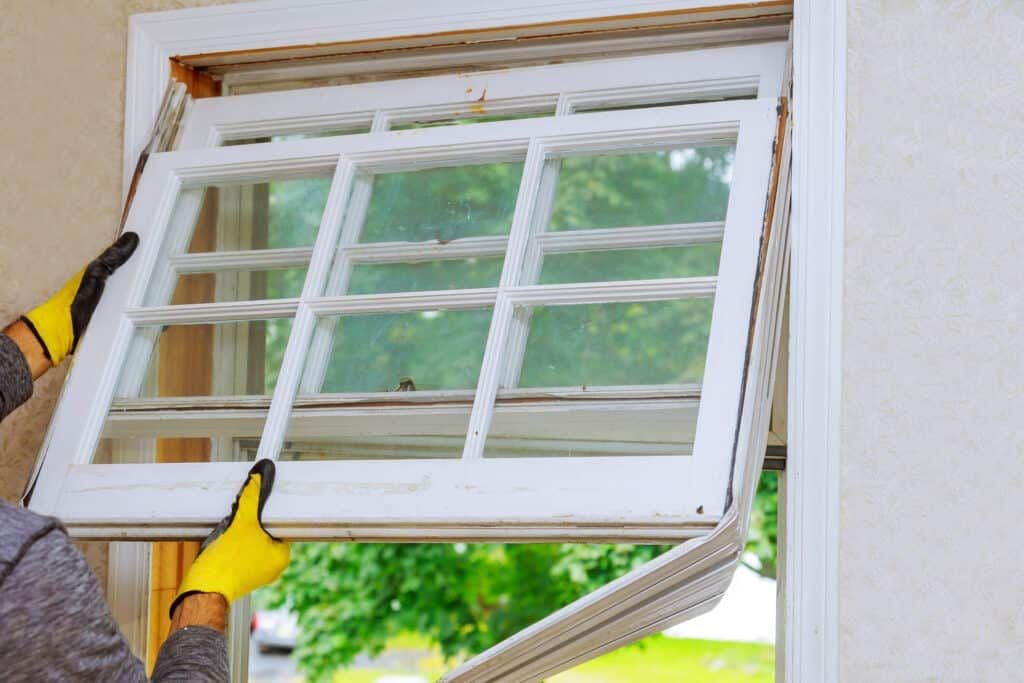
Casement Windows
Hinged at the side and operated with a crank, casement windows swing outward to open. They create a tighter seal when closed, which makes them more energy-efficient in windy conditions.
Pros: Casement windows are often used above the kitchen sink or any other hard-to-reach area. Casement windows offer excellent ventilation and energy efficiency.
Cons: Casement windows may be more costly than double-hung windows.
Best for: Kitchens, bathrooms, and side-facing walls where maximum ventilation is needed.
Sliding Windows
Sliding windows glide horizontally along a track. They’re a great option when vertical space is limited or when you want to enjoy a wide, unobstructed view.
Pros: Sliding windows are easy to operate and don’t protrude from the house. They offer excellent ventilation.
Cons: The sliding track can collect dirt, ice, and snow.
Best for: Large wall openings, finished basements, or modern home styles.
Awning Windows
Awning windows open by being pushed outward from the bottom of the window frame.
Pros: Awning windows work great in areas with a lot of rain. They allow ventilation while keeping water from entering the room. They are often used with a picture window to allow ventilation inside the room and offer clear views of the outside.
Cons: Awning windows protrude from the outside of the house, so they aren’t great for high-traffic areas. They also can’t be used as an escape route during an emergency.
Best for: Areas where ventilation is needed, low traffic areas.
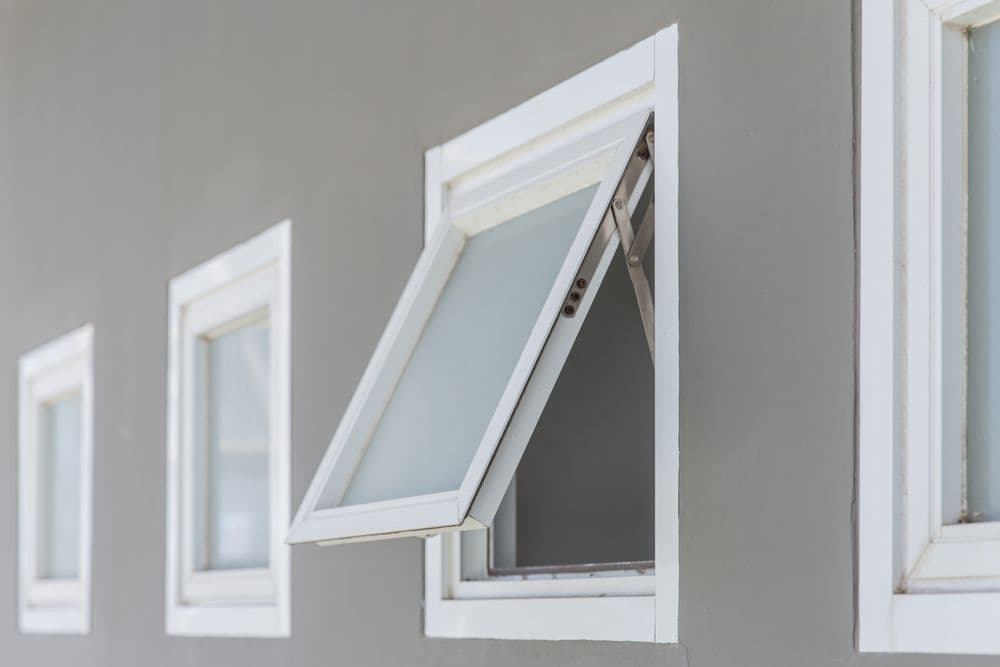
Bay Windows and Bow Windows
These fixed windows don’t open, but they make up for it with panoramic views and maximum natural light. Bay windows extend outward, creating a cozy nook or added dimension to the exterior. Bow windows curve outward in a gentle arc, offering a softer, more elegant profile that lets in even more light.
Pros: Boost curb appeal, expand interior space, flood rooms with natural light
Cons: Higher installation cost, not ideal for tight exterior spaces
Best for: Living rooms, entry areas, and anywhere you want to make a visual statement.
Picture Windows
Picture windows are large windows that don’t open, although they can be paired with smaller operating windows.
Pros: Picture windows offer unobstructed views and increased energy efficiency.
Cons: Unless you purchase a quality window with a low e coating, a large picture window can increase the temperature inside the house in hot climates. Learn about heat transfer and controlling cooling costs before purchasing a large-picture window in a warmer climate.
Best for: Large wall spaces, scenic views, or rooms where natural light is more important than ventilation.
Skylight Windows
Skylight windows add natural light to a home while protecting your privacy. Some choose glass block windows in a bathroom. Others go with skylight windows.
Pros: Skylights add natural light and enable the homeowner to enjoy sky views. Some skylights can open.
Cons: There are typically construction considerations when installing skylights.
Best for: Bathrooms, stairwells, and attic spaces where wall space is limited but daylight is desired.
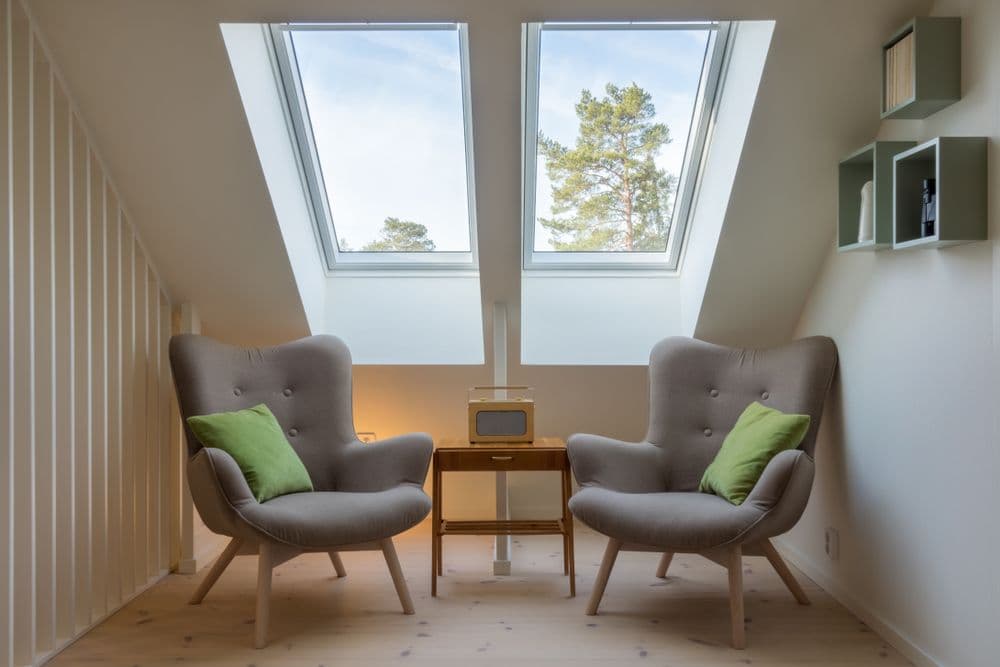
Custom Replacement Windows
Are you looking for a specific type of replacement window that’s not on our list? HomeFix Custom Remodeling will find the right window style for your house. Tell us your goals, and we will find the right product for you.
Homefix Custom Remodeling provides home renovation in Washington D.C., Maryland, Florida, North Carolina and Virginia. Fill out the contact form on our website, and a local team member will reach out to you to answer any questions you have about replacing windows.
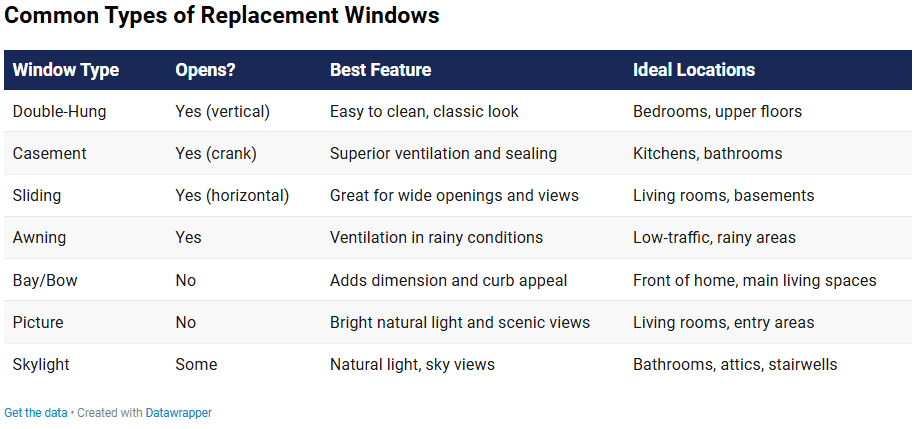
Which Window Frame Material Should You Choose?
Once you’ve picked a style, the next major decision is window frame material. Your choice will affect your home’s energy efficiency, maintenance needs, and overall budget.
Let’s walk through the most common options.
Vinyl
Vinyl windows are a customer favorite for a reason. They're budget-friendly, durable, and offer excellent thermal performance. Vinyl doesn't peel, crack, or warp, making it ideal for humid summers and snowy winters alike.
Pros: Low maintenance, affordable, energy-efficient
Cons: Fewer color/finish options
Wood
Wood frames offer a natural, classic beauty that can’t be matched. They insulate well and add charm to historic or high-end homes—but they do require more maintenance to avoid rot or pests.
Pros: Timeless appearance, good insulation
Cons: Expensive, needs regular upkeep
Composite and Fiberglass
These high-performance materials are built to last. Fiberglass can handle extreme temperatures and resists swelling or warping. Composite frames blend materials like wood fibers and polymers for strength and flexibility.
Pros: Durable, energy-efficient, lower maintenance than wood
Cons: Higher upfront cost compared to vinyl or standard options
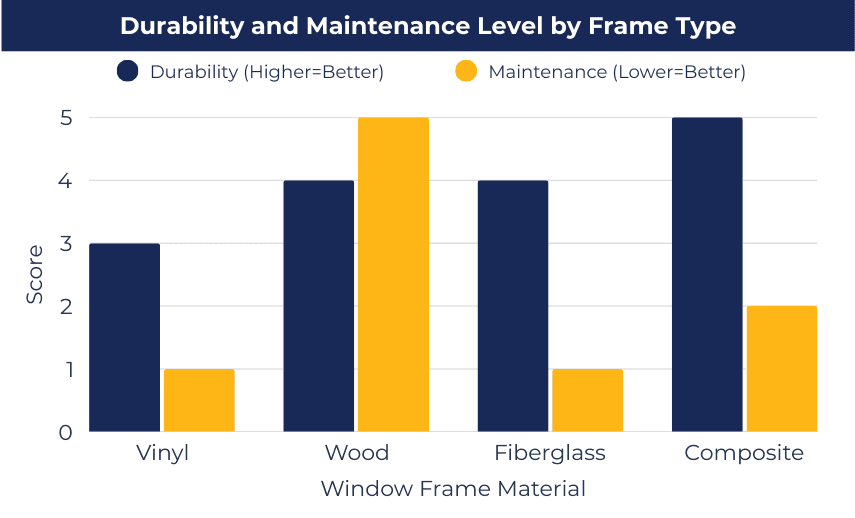
How Do Energy-Efficient Windows Help You Save?
Energy-efficient windows aren’t just a nice-to-have—they’re a must for today’s homeowners. In fact, they’re one of the best upgrades you can make for both comfort and cost savings.
Here’s how they make a difference:
Lower utility bills. ENERGY STAR® windows can save Mid-Atlantic homeowners up to $350 per year on heating and cooling.
Year-round comfort. Features like Low-E coatings reflect infrared light, keeping heat inside in winter and out in summer.
Better insulation. Argon or krypton gas between panes reduces heat transfer far more effectively than air.
Noise reduction. Thicker panes and tighter seals help block outside sounds.
- Difficulty opening or closing windows

Why HomeFix Customers Choose HomeStar™ Windows
At HomeFix, we don’t just install windows—we install peace of mind. Our exclusive HomeStar™ window line offers premium -energy efficiency and performance tailored for Mid-Atlantic homes.
Here’s what sets HomeStar™ apart:
Designed for the mid-Atlantic climate. HomeStar™ windows are engineered to perform in both humid summers and icy winters.
Only available from HomeFix. You won’t find these windows in big box stores—they’re exclusive to our customers.
Certified installations. All windows are installed by factory-trained pros who follow strict quality standards.
- UltraCare™ Lifetime Warranty. We back your windows with a true lifetime warranty that covers product and labor.
"HomeFix Custom Remodeling replaced twenty‑one windows for us. They did it in one day! The installers were professional, courteous, and cleaned up afterwards. It was very straightforward. Their customer service was excellent!" - Jan H., Centreville, VA
When Should You Replace Your Windows?
Not sure if your current windows need replacing? Here are some signs to watch for:
Drafts or cold spots. Especially near older windows or frames.
Condensation between panes. Indicates seal failure in double- or triple-pane glass.
Sticking or jamming. Windows that don’t open or close smoothly may be warped.
Rising energy bills. Poor insulation is often the cause.
Visible damage. Cracked panes, rotting frames, or peeling paint are all red flags.
If your windows are over 20 years old, there’s a good chance they’re costing you more than they’re saving.
How to Get Started with Replacement Windows from HomeFix
Replacing your windows shouldn’t feel stressful; it should be exciting. At HomeFix, we make the process simple from start to finish:
Free consultation. We come to your home, evaluate your needs, and provide a clear, no-pressure estimate.
Expert product selection. Choose from our exclusive HomeStar™ line, including custom styles and finishes.
Certified installation. Every window is installed by trained professionals, not subcontractors.
Lifetime protection. Our UltraCare™ Lifetime Warranty means you’re covered, now and years from now.
Next Steps: Let’s Make Your Home More Comfortable
Whether you're trying to eliminate drafts, improve curb appeal, or reduce your utility bills, the right replacement windows make all the difference. With HomeFix and our exclusive HomeStar™ windows, you get more than a product. You get a long-term partner in home improvement.
Schedule your free estimate today, and let us show you why HomeFix is Built to Care™.
Request Your Free In-Home Consultation
Contact Us

Monday-Friday: 8am-8pm
Saturday: 8am-8pm
Sunday: Closed

